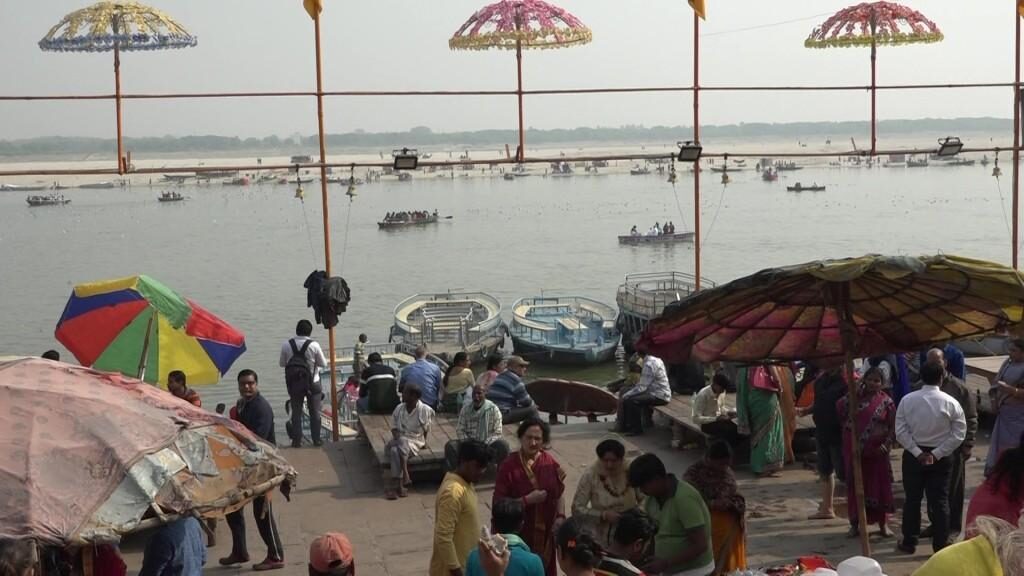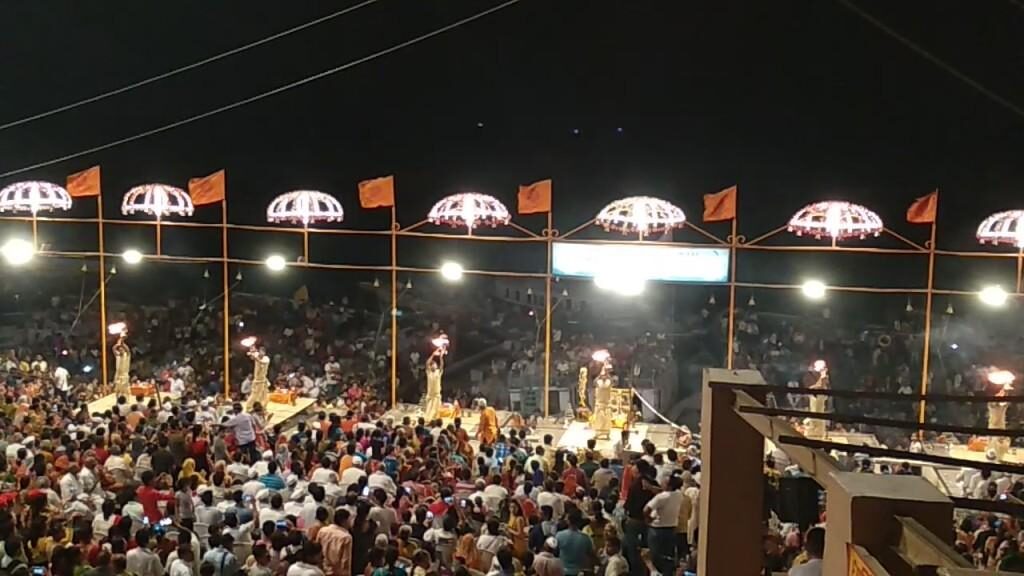DASASWAMEDH
Lord Shiva was in Mandarachal and Kashi was ruled by a very pious and religious King named Divodas. In his Kingdom every one was very happy and there was all round prosperity. He had reached an understanding with Lord Brahma that as long as he was ruling, Devas and other celestial beings should stay away from Kashi and should not create any interference in Kashi.
Lord Brahma more or less agreed to it but on one condition that King Divodas should prove to be an excellent administrator and all people living in Kashi and visiting Kashi should be treated well in their religious pursuits. The King agreed and accordingly gave excellent governance.
Lord Shiva was very upset at being away from Kashi for a long time and he wanted to make King Divodas commit some mistake. Accordingly, he sent sixty four Yoginis and Lord Surya in succession. But they did not accomplish the task. (Kindly refer Divodaseshwar).
Lord Shiva then sent Lord Brahma to Kashi to create disturbances. Lord Brahma tried his level best but he was very much satisfied with the efficient way in which King Divodas was ruling Kashi. To test the King, Lord Brahma expressed his desire to perform Aswa Medha Yagya and the King gave every thing in his command to Lord Brahma. Lord Brahma performed not one but ten Aswa Medha Yagyas (Horse Sacrifice rituals). The smoke arising out of the huge fire of the Yagya reached the sky and assumed a light blue colour. To this day, the sky is maintaining the same colour which people refer to as “Sky Blue”.
The Teerth nearby took the name of Dasaswamedh Teerth. Prior to advent of Lord Brahma, the Teerth was known by the name of Rudra Sarovar. Now the bathing place has come to be known as Dasaswamedh Ghat. Lord Brahma installed Shiv Lings known as Dasaswamedheshwar and Brahmeshwar and started worshipping Lord Shiva.

(DASHASHWAMEDH GHAT)
A devotee who takes a holy dip in Dasaswamedh, performs all religious activities like Japam (repitition of a set of religious texts called Mantras), Daan (donation with a religious end use), Homam (rituals with fire), chanting of Vedas, Pooja, Tarpan etc. will derive maximum benefits. Kashi Khand further states that Annadanam (free feeding) performed at Dasaswamedh will yield multiple benefits. One trust is performing this holy task at Annapoorna temple which falls under the spiritual area of Dasaswamedh.
——————————————————————————————————-
Kashi Khand, Chapter 52, Shlok 90
तिथिं दशहरां प्राप्य दशजन्माघहारिणीम्
दशाश्वमेधिके स्नातो यामीं पश्येन्न यातनाम्
The one who bathes in this Dashashwamedh Tirtha on (Ganga) Dussehra Tithi, which destroys the sins of ten births, does not have to face torture of Yama.
———————————————————————————————————
Please watch our YouTube Video on Dasaswamedh Teerth in the below Link :
https://www.youtube.com/watch?v=17cp-USFyOM&t=131s
A devotee who takes a holy dip in Dasaswamedh Teerth (now Dasaswamedh Ghat) on the first day after Amavasya in Aashad month (June 22-July 20), will see his sins totally getting removed from him. A devote who bathes in Dasaswamedh and worships Dasaswamedheshwar will be free from all sins committed knowingly or unknowingly.
——————————————————————————————————-
Kashi Khand, Chapter 61, Shlok 31
गङ्गा यमुनयो: सङ्गे यत्पुण्यं स्नान कारिणाम्
काश्यां मत्सन्निधावत्र तत्पुण्यं स्याद्दशोत्तरम्
(Lord Vishnu says,) Whatever punya is obtained by devotees who take bath at the confluence of Ganga and Yamuna, such devotees obtain ten times more punya by taking bath at the Teertha near to me (Dashaswamedha Prayag Teertha) in Kashi.
———————————————————————————————————
Kashi Khand has recommended that the devotees should bathe in Dasaswamedh in Aashad month for the entire fortnight starting from the first day after Amavasya. A devotee who bathes in Dasaswamedh gets the benefit of performing Aswa Medha Yagya.
In TV or video clippings Varanasi’s river ghat is shown with a lot of brown coloured umbrella like structures, the place is Dasaswamedh Ghat. Of late, one important function has started in Varanasi viz. Ganga Aarti.

(DASHASHWAMEDH GANGA AARTI)
A group of pundits perform Aarti for River Ganga (River Ganga is worshipped as Maa Ganga), daily in the evening at around 7.15 p.m. The entire performance lasts for about 45 minutes and there is a huge crowd. It is worth watching this aarti sitting in a boat. During the time of aarti, the entire area turns into a divine and pious environment.



